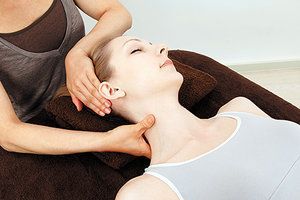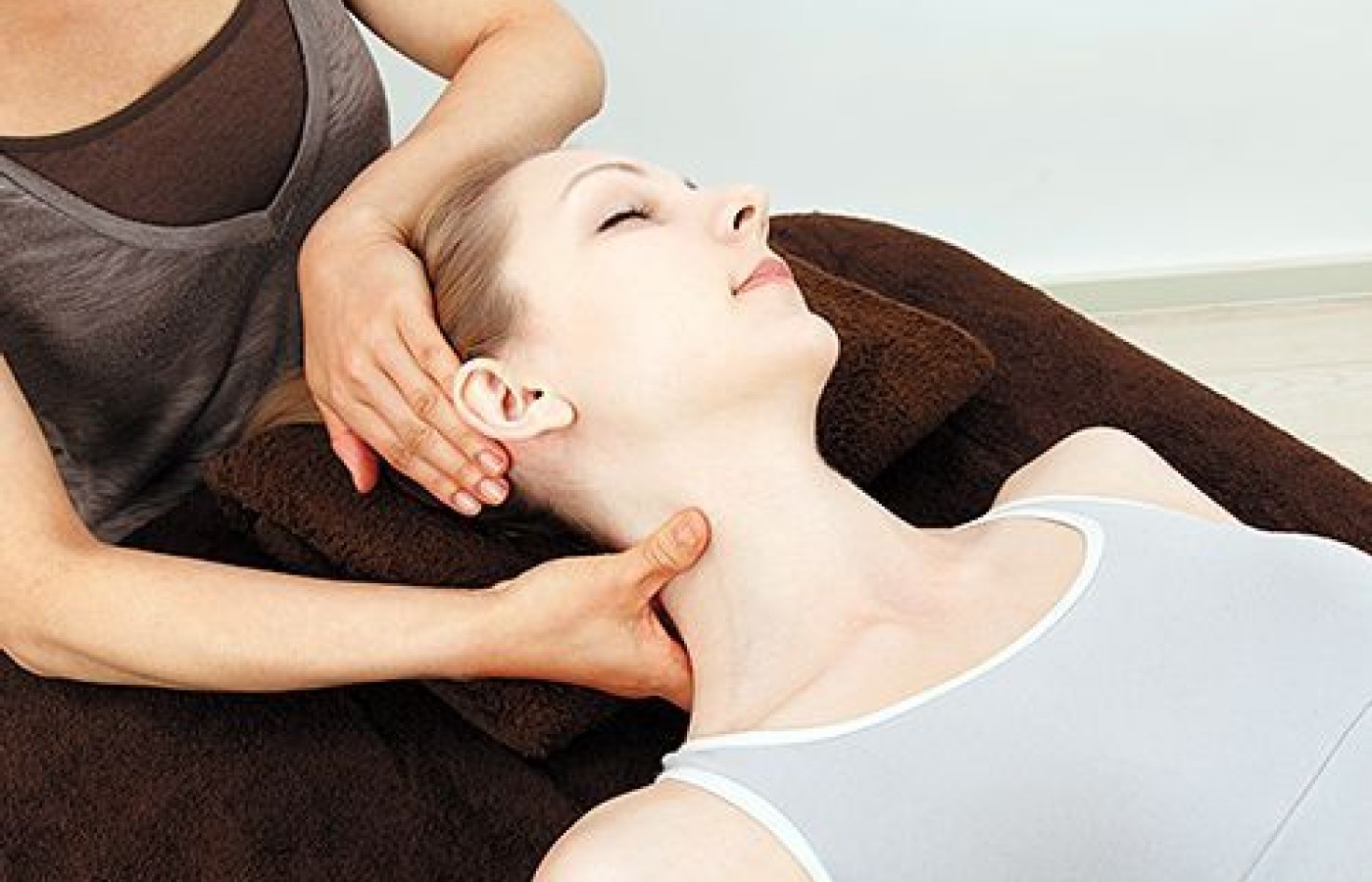Whether you accept it, avoid it or live somewhere in between, insurance coverage has become a defining issue for our profession. Patients increasingly expect to use their benefits, practitioners want to be compensated fairly for their time and expertise, and the system itself remains – at best – fragmented. The encouraging news is that coverage has expanded in meaningful ways. The challenging news is that reimbursement, across the board, remains inadequate.
Promoting Acupuncture with Acupressure Demonstrations
Dan and his wife Marla were admiring the beautiful bouquet of flowers at our booth at the Business Expo when our receptionist asked him if he knew anyone who had tried acupuncture. "My daughter is studying acupuncture in Phoenix" he said, "but you can't help me. I have had four back surgeries, they fused all my lumbar discs, and I still have constant back pain. Nothing can help me," he said.
When I offered him a free acupressure pain relief treatment, he almost laughed but, his wife said, "What have you got to lose?" So, he gave it a try. I asked him to fill out a one-page health survey. Then, I invited him and his wife "into my office" behind the promotions table where we had set up a few folding chairs. After taking a couple of minutes to discuss the history of his back pain he told me that his pain level at that moment, sitting in the chair was a Level 5 or 6. I asked him if any specific change of position aggravated his back pain. After shifting around he found that leaning forward increased the pain.
He showed me where the pain was located on both sides of the low back more or less level with L-5. Before we started the acupressure, I had him slowly lean forward and stop when the pain increased. He stopped after moving only 10º. I had him do it twice to make sure the test was repeatable. I told him that I didn't expect to eliminate his back pain but, I hoped to see some measurable improvement. He said that he would be happy with any improvements, but he didn't expect to feel a difference.

I pressed two acupressure points on his left hand until he felt a strong connection with each point. They were Ling Gu, a Master Tung point between LI-4 and LI-5, and Zhong Bai, 1 cun proximal to TW-3. I asked him which point was more sensitive and increased the pressure on the other one until they were evenly balanced. Then I asked him to take three deep, slow breaths. When he finished breathing, I switched to the right hand and pressed the same acupressure points while he repeated the deep breathing. Finally, I asked him to lean forward slowly and stop when the pain increased. This time he leaned forward about 30º, he smiled, and his wife raised her eyebrows noticing the difference. I asked him what his resting pain level was now and he told me it had reduced to a level 2 or 3.
People often have difficulty believing that immediate pain relief from acupressure can be real. All they need is a little verification. So, I said, "It's faster than morphine, right?" He smiled and agreed with me and I knew that he got it. He said, "I think I would like to try and see what acupuncture can do" and his wife was so happy that he was willing to try it that she could hardly contain herself. Our receptionist set up an appointment time, gave him a set of Health History Forms, and sent him on his way.
Our clinic is located in Beaver Dam, Wisconsin, a small town with modest household incomes and a population around 15,000. It pains me to know that many people in our area are suffering from pain and disease that we could help if only they would come see us. Our clinic has seven treatment rooms, two acupuncturists and a receptionist. We can handle more than 100 treatments per week, so I'm always looking for more effective ways to introduce acupuncture and Oriental medicine to our community.
People who are uncertain about making their first acupuncture appointment often make excuses like these: "I don't have enough time or money to try it," "I'm scared of needles," or "I don't know if I'll get any results." When I offer free acupressure treatments at a health fair, I bypass all these defenses. It only takes 5 to 10 minutes of their time to try, it doesn't cost anything, and there are no needles to be afraid of. After the treatment they know that acupuncture can help because they can feel the difference. The last time we did this at a Women's Expo we had eight eager new clients who signed up for an initial appointment.
After years of promoting our clinic at health fairs, I created a website to introduce the benefits of acupressure on the World Wide Web. My self-help acupressure website is designed to give immediate, drug free, pain relief. It's free, available anytime and anywhere you have an Internet connection, and there are no needles to fear. This website has detailed acupressure treatments for 28 separate headache locations, and many more for the neck, upper back, low back and shoulders.
The treatments are based on effective acupuncture protocols from teachers like Dr. Tan and Master Tong which I use in my clinic everyday. They are easy to locate and are designed to use the least number of pressure points which can still be effective. Practitioners of Dr. Tan's and Master Tong's styles of practice will find commonly used protocols, which I have adapted for acupressure instead of needles.
Whatever acupressure technique you use, it is important to set the stage properly if you wish to sign up new patients. Make your booth at the health fair as friendly and inviting as possible. We use balloons and fresh flowers to attract attention, give out healthy treats and talk to everyone we can. As people walk by, we often start a conversation by asking if they know anyone who has had acupuncture. Then we tell them about the free acupressure pain relief treatments, which are advertised on a banner displayed behind our booth. If they are interested in a free treatment, we invite them to sit down with a clipboard and fill out a one page survey before their free treatment. This survey collects their basic contact information and takes them through a series of common symptoms with check boxes to asses their current health issues. Most people try to avoid thinking about their symptoms and this survey helps to remind them of the health issues, which they are trying to ignore.
After they complete the survey, I briefly discuss their symptoms with them. Then I focus on getting them ready for their acupressure treatment. I ask them if they have existing, ongoing pain like a headache or if they have pain that can be activated by activity like turning their neck. If they have no pain today there is no reason to do an acupressure demonstration because they will not feel any relief. In these circumstances, I skip the treatment and invite them to our clinic as describe below. If they have pain, I find out what their current pain level is, the precise location, how long has this bothered them, and if there are any movements that aggravate the pain. Like the account at the beginning of this article, I am looking for a dramatic, measurable response to the treatment: an increase in pain free range of motion, a significant reduction in pain or both.
When I am clear about the location and parameters of the pain I proceed with the treatment. Even practitioners who use Dr. Tan's balance method or Master Tong Style treatments may be surprised to see how effectively these acupuncture strategies can be used with acupressure. I choose a single point or a combination of two points and then position the client so I can reach them both simultaneously. I press hard enough to establish a strong connection to the first point, then the second point (if one is used), after that I try to equalize the intensity of the points by getting feedback from the client. Next I have the patient take three or four deep, slow breaths while I hold the point or points. If a range of motion is involved, I sometimes ask the client to gently move the affected part during the last few breaths.
Then it is time to evaluate the results of the treatment in contrast to the pain levels or range of motion they described before the treatment. Do not accept a 10% or lower response. This is an indication that they feel no response and only wants to be polite. If the change is not significant, try a different set of points. Ask, "Where is the pain now?" and relocate treatment points if the pain has moved. When treating headaches, I often find that using a few sequential sets of points (starting with the neck if it is involved) will give 100% relief.
When a patient has a significant improvement it is important to establish this result in their mind. Most people find it difficult to believe that a few minutes of acupressure can instantaneously relieve a headache they have had for the last two days. To help the client adjust to what happened, I usually ask questions like: Isn't that amazing? Has any thing ever given you relief like this? Acupuncture is faster than morphine (aspirin, ibuprofen), right? After the client answers this question, I ask them if they would like to experience more. "That was an amazing response to the acupressure. Would you like to get rid of that pain completely?"
Finally, we invite patients to come to our clinic for a free initial assessment to discuss their health history and find out how we can help them. We have them choose from a list of available appointment times or we find out when is the best time for us to call them to schedule their appointment later.
For me, giving free acupressure pain relief treatments at health fairs is exciting and inspiring. The look on people's faces when they notice that their pain is gone is priceless. They get excited and bring other friends or family members to our booth for a free treatment or they tell others who call our clinic weeks after the fair. Best of all, I see people who would never have discovered our clinic on their own become new patients and benefit from acupuncture and Oriental medicine.



